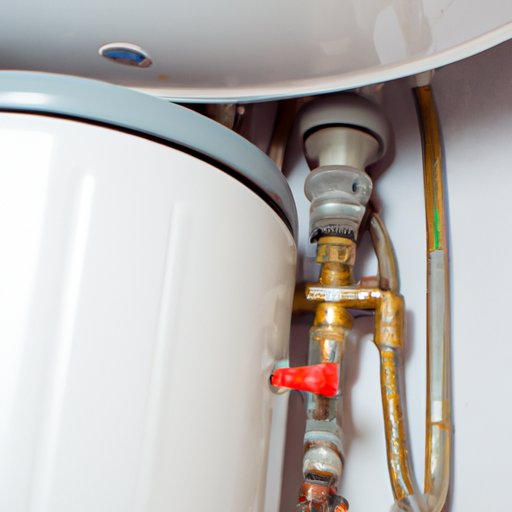Introduction
Most homeowners are not aware of how important it is to flush their water heater regularly. Flushing your water heater is a crucial part of regular maintenance that helps to maintain efficiency, keep the heater working correctly, and prevent permanent damage. In this article, we will explain why you need to flush your water heater and how to do it efficiently.
Why You Need to Flush Your Water Heater
Over time, sediment accumulates in the bottom of your water heater tank. This sediment buildup can cause your water heater to work less efficiently and even cause permanent damage, leading to costly repairs or replacement. Regular flushing can help improve the life and performance of your water heater. It is an essential part of your home’s maintenance routine that should be carried out periodically to prevent serious problems.
Step-by-Step Guide: How to Flush Your Water Heater in 5 Easy Steps
Here’s an easy step-by-step guide on how to flush your water heater.
Step 1: Turn off the power supply
The first step is to turn off the power supply to your water heater. If you have an electric water heater, turn off the circuit breaker. If you have a gas water heater, turn off the gas valve.
Step 2: Turn off the cold water supply
The next step is to turn off the water supply that feeds your water heater. You will find this valve near the top of the heater tank.
Step 3: Drain the tank
Give the water time to cool before draining the tank. Attach a garden hose to the drain valve at the bottom of the heater, and extend the hose to a safe drainage area. Open the valve and let the water drain out. After the water has drained, turn on the cold water supply for a few minutes to flush any remaining sediment out.
Step 4: Refill the tank
Close the drain valve and the cold water supply valve, remove the hose from the drain valve, and open the hot water faucet in your house. Turn on the cold water supply; the tank will begin to fill up. Wait until water flows continuously out of the open faucet, indicating that the air has been released from the tank. Once you have a steady flow of water, turn off the faucet.
Step 5: Turn the power supply back on
Finally, restore power to your tank. If you have an electric heater, return the circuit breaker to its original position. If you have a gas heater, turn the gas valve back on, and relight the pilot as per the manufacturer’s instructions.
DIY Plumbing: How to Properly Flush Your Water Heater for Better Performance
Flushing your water heater is a relatively easy task that can be done by most homeowners. All you need are a few basic tools and materials.
Materials needed:
- A garden hose
- A bucket to capture sediment
- Gloves to protect your hands
Preparation for the task:
Before starting, check the owner’s manual or manufacturer’s website to determine the specific flushing instructions for your water heater. Also, ensure that the water heater is switched off, and the water supply is turned off before beginning the task.
Tips for ensuring that your flushing is done correctly:
- Ensure that the water has cooled down before flushing, as hot water can cause burns.
- Be sure to set up the garden hose and bucket in a safe area, preferably away from your home’s foundation and landscaping.
- After flushing, check for leakages and ensure that valves and other connections are secure.
The Importance of Regular Water Heater Maintenance: How to Flush Your Tank
Regular maintenance is crucial to ensure that your water heater is functioning correctly, and to prevent any damage. Flushing your water heater should be included as part of your household’s maintenance schedule.
How often to flush your water heater:
It is recommended that a water heater should be flushed once every year. However, if you live in an area with hard water, you may need to flush it more frequently (twice per year is a good rule of thumb).
The role of flushing in prolonging the life of your water heater:
Flushing your water heater can help extend its lifespan by preventing sediment buildup, which can cause corrosion and reduce efficiency, leading to increased energy costs and damage to your heating system.
Expert Tips and Tricks: How to Flush Your Water Heater and Save on Energy Bills
By regularly flushing your water heater, you can help save on your energy bills. Here are some expert tips and tricks to maximize the efficiency of your water heater:
- Turn down the thermostat on the water heater to save on energy costs.
- Consider adding an insulating blanket or jacket to the unit. This will help reduce heat loss and save energy.
- Invest in a tankless water heater system to save energy and money on energy bills over time.
- Regularly flush your water heater to prevent sediment build-up, which can reduce unit efficiency and lead to higher energy bills.
Conclusion
As you can see, flushing your water heater is an essential part of regular home maintenance that shouldn’t be overlooked. Regular flushing can help prolong the life and performance of your water heater, increase its efficiency, and prevent costly repairs or replacements.
